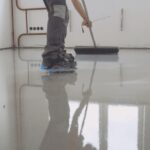Boilers are critical for facilities that depend on heating, power generation, and materials processing. Inspecting them regularly ensures they remain in good working condition.
Understanding the boiler’s components and how they work can make troubleshooting and maintenance easier. Proper maintenance can prevent costly repairs and reduce energy waste.
Contents
Check the Thermostat
Boiler systems are well-known for their efficiency and reliability, but only if properly maintained. You can help unlock your boiler system’s full potential and need to complete savings by identifying critical maintenance tasks you may not be meeting.
In addition to ensuring that the thermostat is calibrated correctly, you should also check the battery regularly. Most models have a low battery indicator that will warn you of impending failure, making this an easy preventive maintenance task to keep up with.
You should also ensure the air vents are unobstructed, as blocked ventilation will reduce performance. You can also lubricate the circulating pump (if applicable) by following the guidelines in your owner’s manual to improve efficiency and prevent future system malfunctions.
Check the Pressure
Boiler repair specialists can perform several tasks to help boost energy efficiency. They can perform safety checks to ensure the boiler is safe, and they can also assess the linkage components and gas lines for issues that may be affecting thermal efficiency.
Getting your boiler pressure up to normal levels is essential to prevent the system from leaking. Often, the first sign of low pressure is the needle on the boiler gauge falling into the red zone.
Typically, this can be easily remedied by turning the filling valves on. However, if you have to do this regularly, it could indicate a leak or other issue in the system, and you should call a gas safe engineer for help.
Check the Burner
The burner is where the air mixes with fuel to create combustion. Keeping it clean is essential to ensure proper airflow, which helps to keep the combustion process running smoothly and efficiently.
Inspect fire check for damage (twice a week). Check oil circulation temperature at the sidearm pre-heaters and the boiler automation system thermostats (daily). Check the low water cut-off for proper operation (daily). Check compressor lube tank oil level and drain tank (daily).
The flue vents are critical to removing combustion byproducts such as carbon monoxide. They must be kept clear to prevent clogs that can lead to incomplete combustion and put people at risk of carbon monoxide poisoning.
Check the Vents
Keeping the area around the boiler clear and regularly checking that the vents are free of obstructions helps your home heating system operate at peak performance. It also prevents carbon monoxide leaks and other potential problems.
Occasionally checking your carbon monoxide detectors and ensuring they work is also a good idea. Carbon monoxide is a dangerous gas that could leak from the heat exchanger, and it’s crucial to call in a professional at the first sign of a problem.
Finally, test the safety valve by lifting the lever and pushing the set pressure monthly. It ensures the safety valve will open and relieve excess pressure if necessary. In addition, you should periodically check the ductwork to ensure it’s free of air leaks.
Check the Flame
Most boilers operate with a combustion chamber. This is where the gas and steam burn to produce energy that carries to water. Unfortunately, this area is prone to corrosion and leaks in transport components, valves, flue systems, and other parts.
Keeping the firebox clean prevents soot buildup that reduces heat transfer and drives up energy costs. Cleaning this part of the system is easy, but it needs to be done frequently.
Maintaining the bottom blow-down system keeps minerals dissolved in the water from building up and causing scale. The system should be tested regularly by taking water samples and performing evaporation tests. Various venting systems should also be checked for blockages, leaks, and proper operation.




